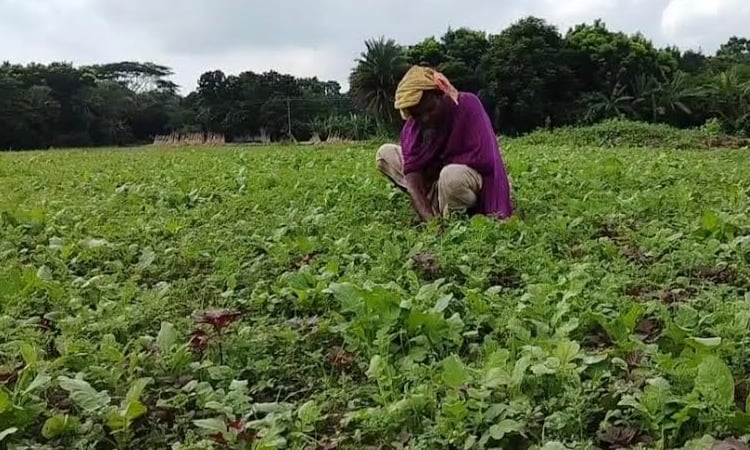News Flash
News Flash

By Azad Ruhul Amin
BAGERHAT, Oct 15, 2025 (BSS) - Farmers in Bagerhat district are expecting a bumper yield of winter vegetables this season, raising hopes of meeting local demand and enabling exports to other regions.
Despite a delayed start to cultivation due to prolonged rainfall, officials said reduced soil salinity and favorable weather conditions have paved the way for excellent production prospects.
This year, winter vegetables have been cultivated on 3,278 hectares of land across the district.
Farmers in several upazilas, including Chitalmari and Mollahat, have already begun harvesting tomatoes, while green vegetables such as beans, spinach and red leafy varieties from Jatrapur and Baruipara are also reaching local markets.
By November, truckloads of winter vegetables are expected to be transported to Dhaka for better prices.
Bagerhat has nine upazilas-Bagerhat Sadar, Kachua, Fakirhat, Mollahat, Morelganj, Sharankhola, Rampal, Mongla and Chitalmari-where tomato cultivation has been increasing each year.
According to the Department of Agricultural Extension (DAE), vegetable cultivation has expanded across all nine upazilas of Bagerhat district this winter season.
In Bagerhat Sadar, 460 hectares have been brought under vegetable farming, including gourd on 170 hectares, brinjal on 120 hectares, tomato on 40 hectares, red cabbage on 30 hectares and spinach on another 30 hectares.
Fakirhat has 500 hectares under cultivation, with major crops such as tomato and gourd on 85 hectares each, along with radish and red cabbage on 50 hectares each.
Mollahat upazila has seen the highest concentration of tomato farming, covering 523 hectares out of its total 560 hectares of vegetable land.
Rampal upazila has 95 hectares under cultivation, dominated by gourd and beans on 25 and 20 hectares respectively. In Kachua, vegetables have been cultivated on 477 hectares, led by tomato on 275 hectares.
Morelganj has 135 hectares of land used for growing beans on 35 hectares and gourd on 40 hectares, while Sharankhola has 40 hectares under vegetable farming, producing mainly beans, gourd and papaya.
In Mongla, 20 hectares have been planted with gourd, tomato and brinjal, while Chitalmari upazila accounts for the largest area under cultivation, with 991 hectares of vegetables, including an impressive 854 hectares of tomato fields.
Ramesh Chandra Ghosh, Additional Deputy Director (Crops) of the Department of Agriculture, Bagerhat, told BSS that the district received 1,658 mm of rainfall between June and September.
"Due to late moisture retention from the heavy rains, Rabi crop cultivation began late. However, the reduced salinity in soil and water has created huge potential for increased vegetable production," he said.
Deputy Director of the DAE, Alhaj Md. Motahar Hossain, said there was no shortage of fertilizers or seeds this year, and favorable weather has encouraged farmers to expand cultivation.
"Farmers are optimistic about higher yields and better profits. With abundant production, vegetable prices will remain affordable for consumers," he added.
He also said the DAE is providing continuous technical support, including pest and disease management, supply of quality seeds and other agricultural inputs.
Many farmers in Bagerhat grow vegetables such as tomatoes, gourds, beans, pumpkins, cabbages, cucumbers, and bitter gourds on the embankments of fish ponds, reducing the need for pesticides and ensuring safer produce for consumers.
According to agricultural officials, farmers are expecting profits ranging from Tk 30,000 to Tk 100,000 per acre from crops like tomato, gourd, bean, sweet pumpkin, cauliflower and cabbage this season.
Motahar Hossain added that in areas like Chitalmari and Mollahat, large quantities of tomatoes often go unsold at the end of the season due to low market prices.
"To address this, the government has decided to establish three cold storages in the region. This will help farmers store their produce and ensure better prices," he said.
Additionally, private initiatives are underway to set up a vegetable processing center, which officials believe will further strengthen the local agri-economy and improve farmers' livelihoods.